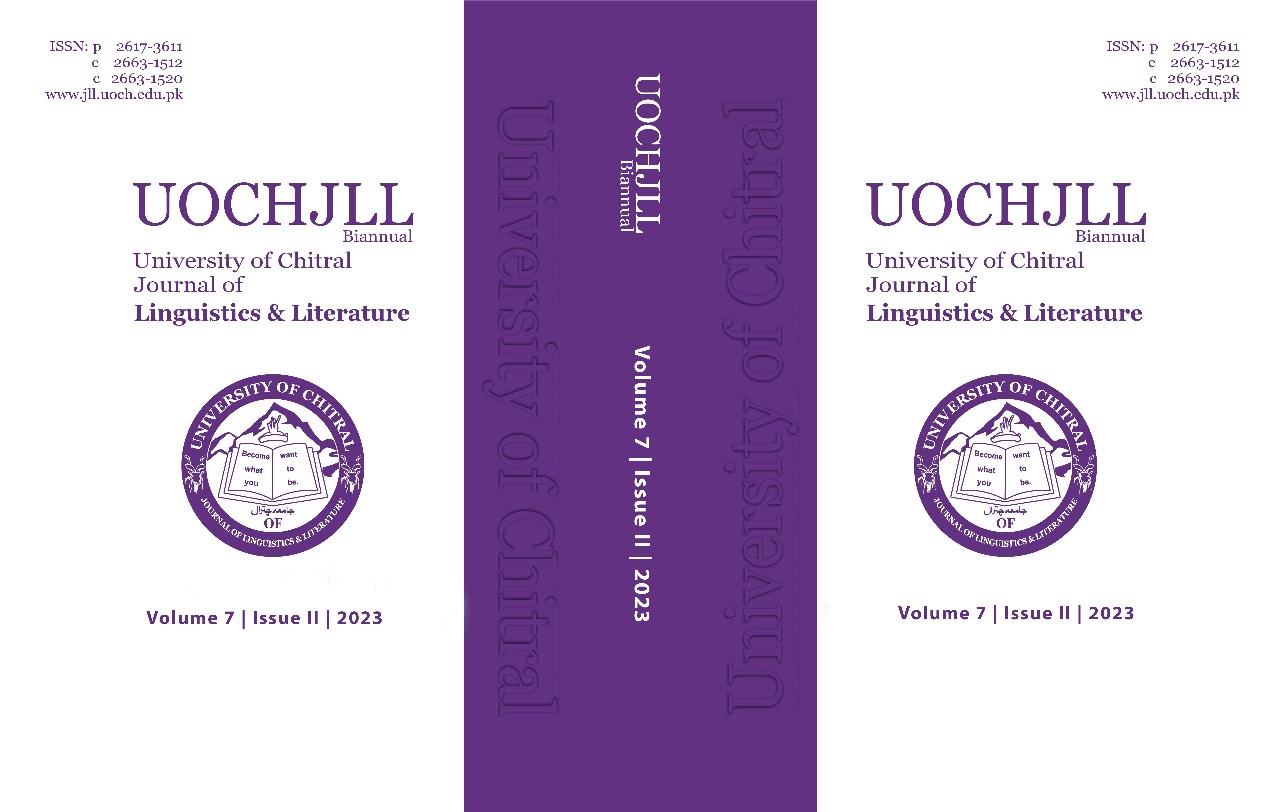Harnessing Artificial Intelligence for Dynamic Landscape: Re-envisioning English Language Teaching in Pakistan
Keywords:
Artificial Intelligence (AI), English Language Teaching (ELT), English Language Learners (ELLs), English Language Teachers (ELTs), Digital Tools, EdTech PlatformsAbstract
The current study is anticipated to sightsee the integration of Artificial Intelligence (AI) in transforming English Language Teaching (ELT) in Pakistan. The advent of AI unlocks the avenues for envisaging and renovating the facade of ELT to concentrate on the varied needs of 21st century English Language Learners (ELLs). ELT extends a pivotal function in the educational landscape of Pakistan and English language proficiency is reckoned as a prerequisite for academic as well as professional attainment, but conformist modes of teaching fall short to embark upon the diverse requisites of ELLs. The study is carried out through a mixed method i.e. quantitative and qualitative outlook though predominantly it is commenced through the quantitative method. Data is collected from English Language Teachers (ELTs) who are teaching at tertiary echelons i.e. school, college and university in the course of a random sampling technique. For that questionnaire has been operated as a data collection instrument. The sample size of the participants in the study is 150 ELTs of both genders i.e. male and female. Findings of the study encapsulate that by harnessing the realm of AI, ELT will evolve towards a more refined, inclusive, inventive, vibrant and receptive Educational Technology (EdTech) ecosystem, potentially empowering ELLs of Pakistan to thrive in an excessively interconnected digital arena.
References
Ahmet, C. (2018). Artificial Intelligence: How Advance Machine Learning Will Shape The Future Of Our World. Shockwave Publishing via Publish Drive.
Arini, D. N., Hidayat, F., Winarti, A., & Rosalina, E. (2022). Artificial intelligence (AI)-based mobile learning in ELT for EFL learners: The implementation and learners’ attitudes.
Asif, M, Afzal, I and Bashir, R (2020) An Analysis of Medium of Instruction Policies in the Education System Of Pakistan with Specific Reference to English Medium Education. Sir Syed Journal of Education and Social Research, 3(2), 370–382.
Channa, L. A. (2017). English in Pakistani public education: Past, present, and future. Language Problems and Language Planning, 41(1), 1-25.
EF Education First (2021) EF English Proficiency Index: Executive summary [Online]. United States: EF Education First. Available from: https://www.ef.com/wwen/epi/executive-summary
Hockly, N. (2023). Artificial Intelligence in English Language Teaching: The Good, the Bad and the Ugly. RELC Journal, 0(0). https://doi.org/10.1177/00336882231168504
Johnson, N., Veletsianos, G., & Seaman, J. (2020). US Faculty and Administrators’ Experiences and Approaches in the Early Weeks of the COVID-19 Pandemic. Online learning, 24(2), 6-21.
Junaidi, J. (2020). Artificial intelligence in EFL context: rising students’ speaking performance with Lyra virtual assistance. International Journal of Advanced Science and Technology Rehabilitation, 29(5), 6735-6741.
Liu, F., Vadivel, B., Rezvani, E., & Namaziandost, E. (2021). Using games to promote English as a foreign language learners’ willingness to communicate: Potential effects and teachers’ attitude in focus. Frontiers in psychology, 12, 762447.
Ma, L. (2021). An immersive context teaching method for college English based on artificial intelligence and machine learning in virtual reality technology. Mobile Information Systems, 2021, 1-7.
Mehrotra, D. D. (2019). Basics of artificial intelligence & machine learning. Notion Press
Nickson, M., & Nudrat, S. (2022). English language teaching, learning and assessment in Pakistan: Policies and practices in the school education system. British Council.
Rashid. A, Muzaffar, I, Dar, F and Butt, S (2016) The Issue Of English as a Medium of Instruction in Primary Schools In Pakistan: Learning English, Mathematics or Science? Human Rights in Language and STEM Education.(Online) 179-204.
Ribeiro, R. (2020, March 9). Artificial Intelligence in English language Learning. Cambridge. Org.https://www.cambridge.org//elt/blog/2020/03/09/artificiAl-intelligence-english-language-learning/
Schweisfurth, P. M. (2019). Is learner-centred education ‘best practice’? UNICEF think piece series: Improving classroom practice (pp. 1–6). United Nations Children’s Fund (UNICEF).
Sridhar, G. S. (2018). Artificial Intelligence: The Future Way of Technology. G.S.SRIDHAR.
Suryana, I., Asrianto, A., & Murwantono, D. (2020). Artificial intelligence to master English listening skills for non-English major students. Journal of Languages and Language Teaching, 8(1), 48-59.
Trudell, B. (2016). The Impact of Language Policy and Practice on Children’s Learning: Evidence from Eastern and Southern Africa.” Commissioned by UNICEF Eastern and Southern Africa Regional Office (ESARO). Basic Education and Gender Equality (BEGE) Section. UNICEF, Nairobi.
Vo, H. K. N., & Nguyen, Q. T. (2021). Applying Grammarly as an online grammar checker tool to enhance writing skills for English-Major students. A Survey on Teachers’ Perceptions of Their Emergency Remote English Teaching, 454.
Wang, R. (2019, June). Research on artificial intelligence promoting English learning change. In 3rd international conference on economics and management, education, humanities and social sciences (EMEHSS 2019) (pp. 392-395). Atlantis Press.
Downloads
Published
Issue
Section
License
Copyright (c) 2023 Imran Hussain, Rubina Rahat, Tahira Parveen (Author)

This work is licensed under a Creative Commons Attribution 4.0 International License.
You are free to:
- Share — copy and redistribute the material in any medium or format for any purpose, even commercially.
- Adapt — remix, transform, and build upon the material for any purpose, even commercially.
- The licensor cannot revoke these freedoms as long as you follow the license terms.





